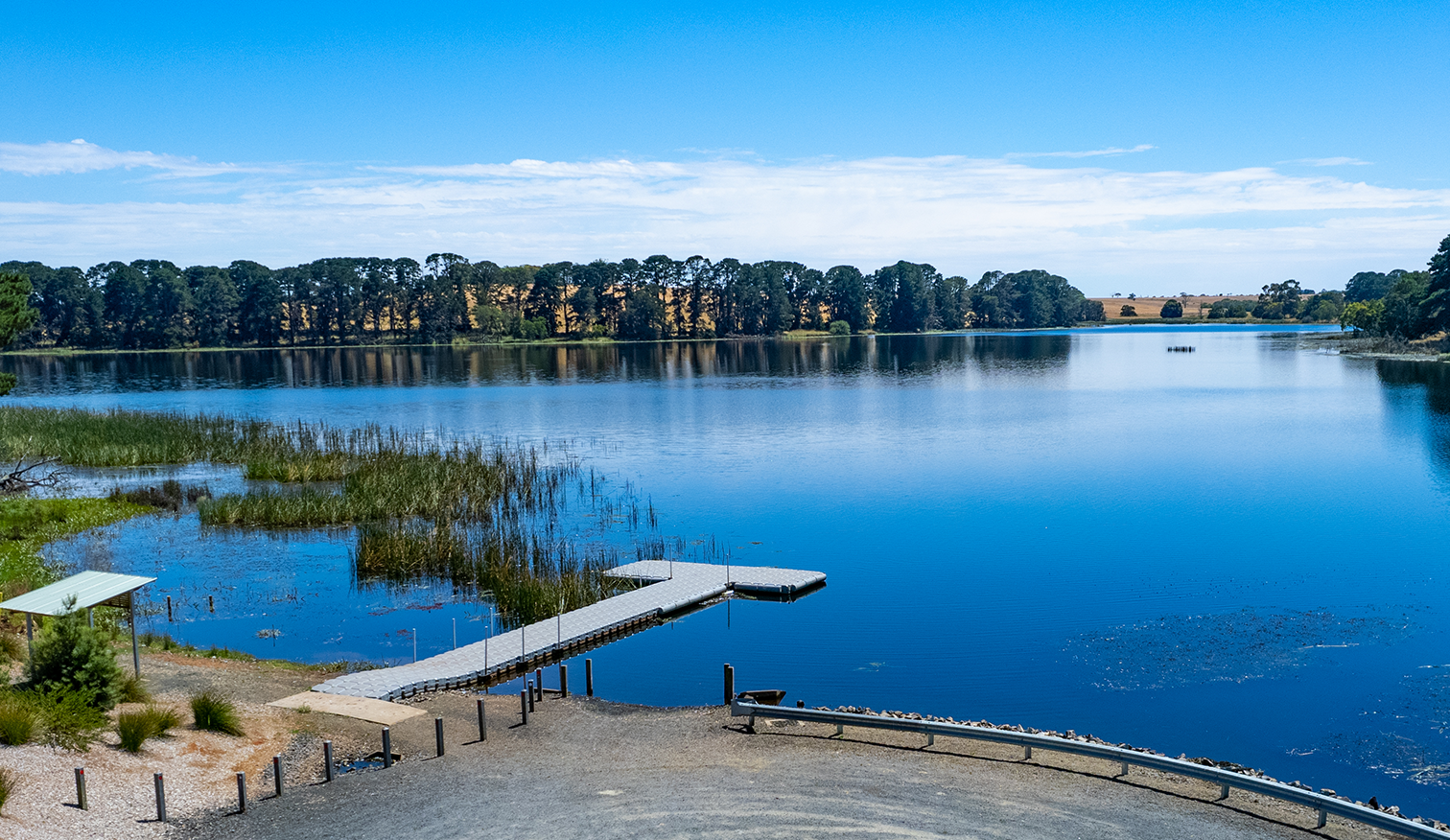Konongwootong Reservoir

About
The Konongwootong Reservoir was built in 1926 to supply water to the townships of Casterton and Coleraine. More recently, the towns have been connected to the Tullich Aquifer, further to the west. The reservoir still acts as a back-up supply and a supply for rural customers along transfer pipelines.
The reservoir has a storage capacity of 1,920 megalitres and is supplied by three spring-fed streams running across grazing land in a catchment area that spans about 11 square kilometres.
Get active
The reservoir is suitable for electric power boats, canoes and kayaks. Boats with petrol combustion engines, water-skiing, trail bike riding and camping are not permitted.
As a spring-fed water resource, it’s more resistant to the impact of drought than many other local waterways. It provides important habitat for many species of migratory birds. Victorian Fisheries Authority stocks the reservoir annually with several thousand brown trout and rainbow trout.
The site contains some remnant grasses and other indigenous species. The site has been identified as potential habitat for the critically endangered Golden Sun Moth (Synemon plana).
The area is dominated by stands of mature pine trees (Pinus radiata), most of which were planted during the 1920s. There are examples of the rough-barked manna gum or white gum (Eucalyptus viminalis) and Australian blackwood (Acacia melanoxylon).
Help us to maintain this site for future generations by respecting the rules and taking any rubbish home with you.
Getting there
Konongwootong Reservoir is located 11 kilometres north of Coleraine via the Edenhope-Coleraine Road.
The main entry points are off Reservoir Road with a second access off the Coleraine-Nareen Road on the northern side of the reservoir.
A Quiet Place
Konongwootong has significant Aboriginal cultural heritage values and is currently registered on the Victorian Aboriginal Heritage Register.
For many thousands of years, through to the late 1830s, the site was a natural wetland with pools of water in winter, and springs and water soaks in summer. The wetland provided foods, water, fibres, medicine and shelter for the Konongwootong Gunditj people. Families flourished, culture was strong.
European settlers arrived, determined to establish large sheep holdings across the region. They were intent on removing the Gunditj from the area.
In March 1840, settlers carrying firearms followed Gunditj warriors to the Fighting Hills area near Casterton, seeking retribution for the theft of a flock of sheep. It was a one-sided fight with an estimated 41 Gunditj men and boys killed, and just one settler wounded by an Aboriginal spear.
A month later, Konongwootong was the site of the Fighting Waterholes Massacre as the settlers attempted to completely eliminate the Gunditj presence from the area. The natural amphitheatre acted as a trap, with an estimated 30 men, women and children surrounded and murdered. The location of their burial is unknown, although heavy flows from a flood in 1946 unearthed human remains. They were gathered up by Mr T.J. Fitzgerald of Coleraine and buried respectfully.
Gunditjmara history indicates that some members of the clan managed to escape and made their way south.
We established a Quiet Place at the reservoir in 2014 to recognise the history of the area. Designed to encourage informed and respectful contemplation by visitors, the landscaped area features a walking path, interpretative signage and three stone benches at the top of a natural amphitheatre with a view over a small wetlands area.
The project was a collaboration between Gunditj Mirring Traditional Owners Aboriginal Corporation Elders and staff, Gunditjmara Nation Elders, the Department of Energy, Environment and Climate Action and Wannon Water.


